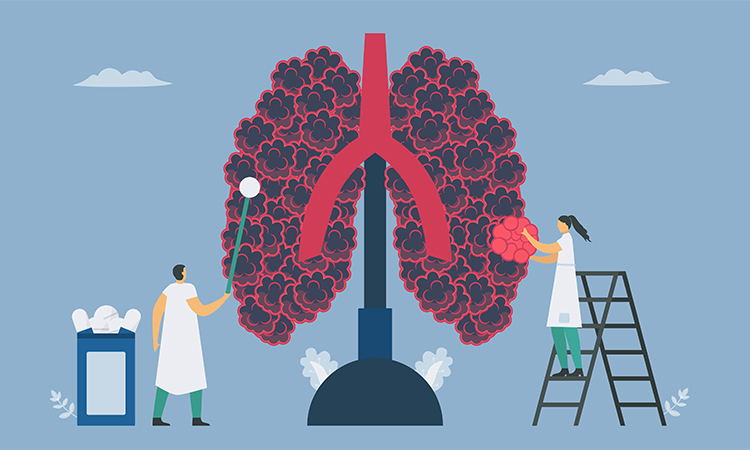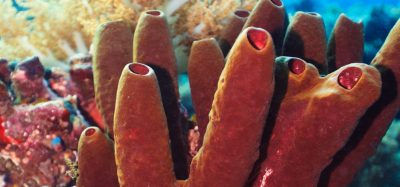Rapid cell reprogramming creates lung-like cells to combat COPD
Posted: 11 July 2025 | Drug Target Review | No comments yet
Scientists from Nagoya University have developed a fast and safe method to create lung cells from skin-like fibroblasts – without using stem cells. This technique could allow for new regenerative therapies for diseases like chronic obstructive pulmonary disease (COPD).


The researchers successfully generated lung cells resembling alveolar epithelial type 2 (AT2) cells from mouse embryonic fibroblasts – without using stem cell technology. This new direct reprogramming approach achieved results in just 7 to 10 days – a major improvement compared to the one-month timeline of traditional stem cell-based methods.
The findings, published in npj Regenerative Medicine, suggest that treating severe respiratory conditions like interstitial pneumonia and chronic obstructive pulmonary disease (COPD), is now a possibility.
The role of AT2 cells in lung health
AT2 cells play a crucial role in lung function by producing surfactant and serve as progenitor cells that enable alveolar repair. In patients suffering from lung diseases, such as interstitial pneumonia, these cells are often lost or damaged, making their regeneration a key focus for developing new therapies.
Biomarkers are redefining how precision therapies are discovered, validated and delivered.
This exclusive expert-led report reveals how leading teams are using biomarker science to drive faster insights, cleaner data and more targeted treatments – from discovery to diagnostics.
Inside the report:
- How leading organisations are reshaping strategy with biomarker-led approaches
- Better tools for real-time decision-making – turning complex data into faster insights
- Global standardisation and assay sensitivity – what it takes to scale across networks
Discover how biomarker science is addressing the biggest hurdles in drug discovery, translational research and precision medicine – access your free copy today
Moving beyond stem cells
“The advent of the induced pluripotent stem cell (iPSC) technology in 2006 has enabled the generation of AT2 cells in approximately one month, but this method is costly and carries risks of tumour formation and immune rejection,” said Professor Makoto Ishii of Nagoya University Graduate School of Medicine. “To overcome these disadvantages, we focused on direct reprogramming instead. The direct reprogramming approach produces AT2-like cells in just 7 to 10 days, with lower tumour risk and potential for autologous use.”
Unlocking the reprogramming code
Professor Ishii led the research in collaboration with Professor Koichi Fukunaga, Assistant Professor Takanori Asakura and Joint Researcher Atsuho Morita from Keio University School of Medicine. The team aimed to directly reprogram fibroblasts into AT2-like cells – something that has never been achieved in mice.
The team aimed to directly reprogram fibroblasts into AT2-like cells – something that has never been achieved in mice
Starting with 14 genes known to be involved in lung development, they evaluated various combinations to see which could activate surfactant protein-C (Sftpc) – a marker specific to AT2 cells. They identified a set of four genes – Nkx2-1, Foxa1, Foxa2 and Gata6 – that proved to be the most effective.
The researchers introduced these genes into a 3D culture of mouse embryonic fibroblasts engineered to produce green fluorescent protein (GFP) when the Sftpc gene was activated. Within 7 to 10 days, about 4 percent of the cells became Sftpc/GFP-positive, showing successful reprogramming. These cells were named induced pulmonary epithelial-like cells (iPULs).
Mimicking native lung cells
The researchers used flow cytometry to isolate GFP-positive iPULs for closer examination. The cells exhibited lamellar body-like structures – distinctive features of AT2 cells. A transcriptomic analysis confirmed that their gene expression profiles closely resembled those of natural AT2 cells.
To test their function in vivo, the iPULs were transplanted into the lungs of mice with interstitial pneumonia. After 42 days, the cells had successfully engrafted in the alveolar region. Some of them had even differentiated into alveolar epithelial type 1 (AT1)-like cells – which are essential for gas exchange and tissue repair.
Toward human applications
The creation of AT2-like lung cells from fibroblasts marks a pivotal moment in regenerative medicine. Having demonstrated the technique in mice, the researchers are now moving forward to translate this approach to human cells.
“In this study, we succeeded in direct reprogramming of fibroblasts into AT2-like cells in mice. We now aim to explore the application of this technology to human cells, with the ultimate goal of developing a safe regenerative therapy using a patient’s own fibroblasts,” said Ishii.
Related topics
Animal Models, Cell Regeneration, Cell Therapy, Drug Discovery Processes, Flow Cytometry, In Vivo, Induced Pluripotent Stem Cells (iPSCs), Molecular Biology, Regenerative Medicine, Sequencing, Stem Cells, Translational Science
Related conditions
Chronic obstructive pulmonary disease (COPD)
Related organisations
Keio University School of Medicine, Nagoya University Graduate School of Medicine








